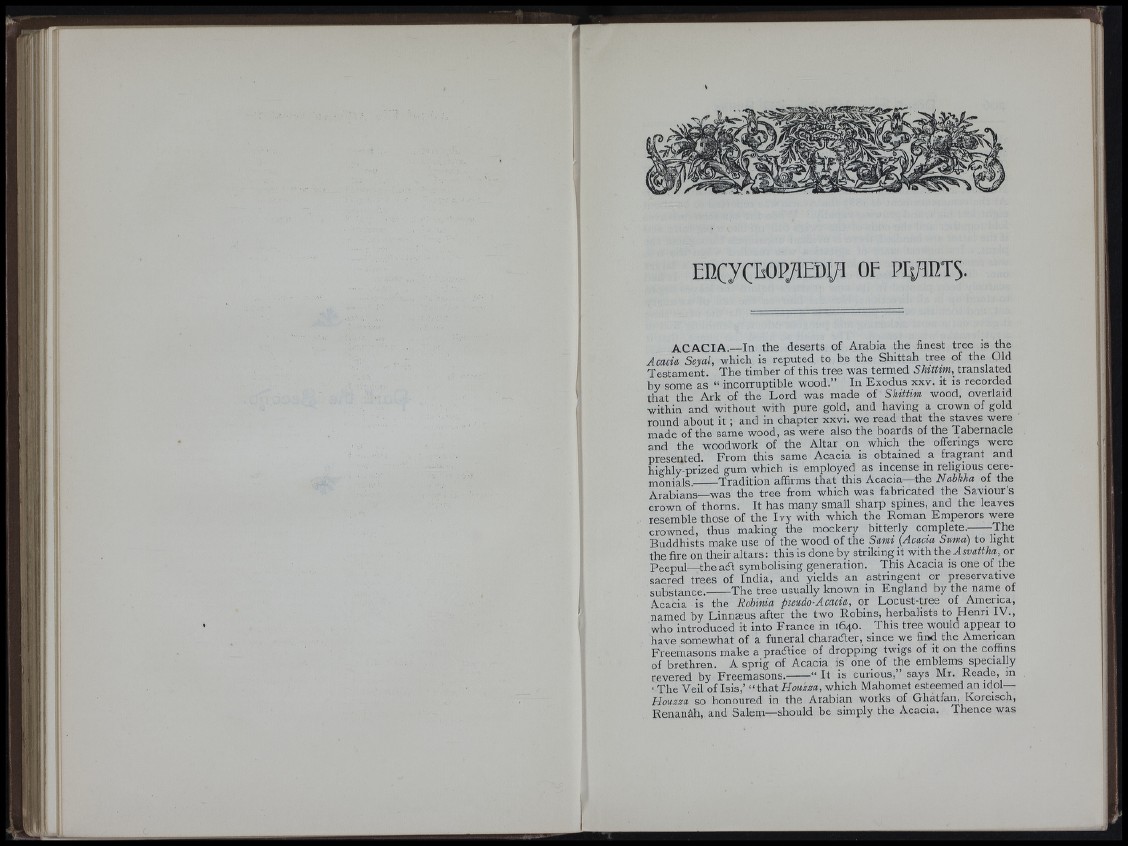
E n C y C h O P A E D P O E P E J I G T S .
! ,1
A C A C IA .—In the deserts of Arabia the finest tree is the
Acacia Seyal, which is reputed to be the Shittah tree of the Old
Testament. The timber of this tree was termed Shtttim,^ translated
by some as “ incorruptible wood.” In Exodus xxv. it is recorded
that the Ark of the Lord was made of Shittim wood, overlaid
within and without with pure gold, and having a crown of gold
round about it ; and in chapter xxvi. we read that the staves were
made of the same wood, as were also the boards of the Tabernacle
and the woodwork of the Altar on which the offerings were
presented. From this same Acacia is obtained a fragrant and
highly-prized gum which is employed as incense in religious ceremonials.
Tradition affirms that this Acacia—the Nabkha of the
Arabians was the tree from which was fabricated the Saviour’s
crown of thorns. It has many small sharp spines, and the leaves
resemble those of the Ivy with which the Roman Emperors were
crowned, thus making the mockery bitterly complete. - T J
Buddhists make use of the wood of the Sami [Acacia Suma) to light
the fire on their altars: this is done by striking jt with the Asvattha, or
Peepul the acfi symbolising generation. This Acacia is one of the
sacred trees of India, and yields an astringent or preservative
substance. The tree usually known in England by the name of
Acacia is the Robinia pseudo-Acacia, or Locust-tree of America,
named by Linnseus after the two Robins, herbalists to Henri IV.,
who introduced it into France in 1640. This tree would appear to
have somewhat of a funeral character, since we firipd the American
Freemasons make a practice of dropping twigs of it on the coffins
of brethren. A sprig of Acacia is one of the emblems specially
revered by Freemasons. “ It is curious,” says Mr. Reade, in
‘ The Veil of Isis,’ “ that Houzza, which Mahomet esteemed an idol—
Houzza so honoured in the Arabian works of Ghatfan, Koreisch,
Renanah, and Salem—should be simply the Acacia. Thence was